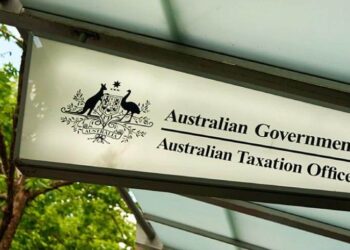Argyle Lawyers principal Peter Bobbin said where SMSF practitioners tend to deal more heavily with one trustee of a fund compared with the others they may want to give the other members a disclaimer or authorisation for their partner to act on their behalf.
“Around of 93 per cent of SMSFs across this country have more than one member. You probably take instructions from one of them, but you know there’s more than one of them and you know that they are actually co trustees or co directors,” said Mr Bobbin.
“When you’re taking instructions from one of them, you know that it impacts on the whole of the superannuation fund, whatever those instructions may be. When it impacts on the whole of the superannuation fund, it actually impacts on that other member,” he said.
One of the major risk issues with this he said is where two members who are married in a fund decide to separate but the professional has only ever received instructions from one of the members, despite those instructions impacting both members.
“This is a major risk issue. I have seen this [before], this happened to a financial planner and his clients who had a fantastically acrimonious divorce,” he told delegates at the SMSF Association conference.
“What happened was there was this divorce and the lawyer for her went through all the investment issues as you do, and then had the battle with the husband’s lawyer and then it finally settled. In the process of going through all of the financial matters for her, the lawyer noted that there were certain instructions that were acted upon by the financial planner and his client, said she didn’t give those instructions, her husband did.”
The financial planner ended up being sued for acting on the instructions of the husband when it impacted upon her, he said.
Mr Bobbin recommended giving the client or trustee who is not the main contact a disclaimer which confirms that the other member is the primary contact and that they have been nominated to act on their behalf.
It should also state that the professional cannot determine that the information provided to them by another party represents the client unless they deal personally with that client, he said.
“What I’ve actually found is that a letter of this kind actually causes the other person or member who isn’t the primary contact, to engage more with the adviser or accountant. So it’s almost like an empowering thing,” he noted.



Thanks for the comment Grant. Is there a way to get the party to exit the fund? I thought they had to fill out a rollover request. If the parties are for example restrained from one another how would that be possible?
It is vital with any SMSF and moreso with a Family SMSF that the funds rules have a provision such that it is agreed in a separation that one or both if the members are to exit the Fund within 60 days after the Austere determines their member benefit. This may be rolled over.
I read Peter Bobbins’ comments on divorce and the dangers for an adviser or accountant when dealing with an SMSF and there are warring parties. And as advisers we have to be extremely careful in any SMSF matter because the impact of section 55(3) of SISA puts all advisers, administrators, auditors and divorce lawyers in the firing line. In Dunstone v Irvine VSC 488 two business partners who shared an SMSF had an acrimonious split (a business divorce) and one Trustee prevented the other withdrawing their benefits in accordance with the Fund’s deed. The result. The Trustee erred in not paying out the lump sum payment of the retiring member as per the trust deed. And what we all need to be mindful of. The Trustee, in breaching the terms of the trust deed, laid himself open for an action under section 55(3) for loss and damages as a result of not complying with the deed. The Supreme Court of Victoria awarded $380,000 in damages.
The accountants and administrators in this case acted in accordance with the deed and so escaped any action for loss or damages. But if they were complicit or ignorant of the deed they also would have been liable for any loss or damages. And we know lawyers, they will find any person to sue, particularly if one party has PI insurance or is licensed.
[b]So, when Peter says that you have to be careful dealing with all members and trustees in a Fund, he knows what he is talking about [/b]and has no doubt taken a lot of actions against financial planners. So be careful, watch section 55 (3), know what is in your deed, make sure the trustees sign off that they have read the deed and above all, plan for separation by requiring one party to exit the Fund as soon as separation rears its ugly head.